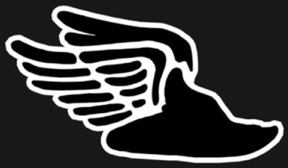Running is an easy sport. Put one foot in front of the other and increase your pace. But it never is that simple. Considerations include foot strike type (heel or midfoot), long or short stride and even correct running gear affect the way you run. The perfect running form is a feat not many runners have achieved.
When your form is flawed, the body suffers. Running repetitively with an incorrect form for 2,000 - 3,000 steps will cause damage to most of your leg joints and may also injure muscles and ligaments supporting it.
When your body fails, PAIN manifests. Knee pains due to improper footwear and running form, shin splints due to overtraining and cramps due to lack of training, dehydration and energy depletion are common among runners. Rehab Specialists / Physiatrists, Orthopedic Surgeons and Internists are often consulted on injuries related to running. Pain relievers and physical therapy are often advised. Although used often in the sport, issues regarding safety of pain killers for runners have divided medical practitioners.
When your body fails, PAIN manifests. Knee pains due to improper footwear and running form, shin splints due to overtraining and cramps due to lack of training, dehydration and energy depletion are common among runners. Rehab Specialists / Physiatrists, Orthopedic Surgeons and Internists are often consulted on injuries related to running. Pain relievers and physical therapy are often advised. Although used often in the sport, issues regarding safety of pain killers for runners have divided medical practitioners.
In anticipation of the pain, some runners take pain killers a few minutes prior to a race. This is not advised. Pain signals your body that something is wrong and needs urgent attention. You will not be able to detect that your form is incorrect or your leg muscles are fatigued. Without correction, the injury may progress to permanent damage and later put an end to your running career.
Some runners take these pain medications during the race. Fast-relief meds although offer immediate pain relief sometimes do more harm than good. Most of these medications are metabolized in the kidneys and may push them to acute renal failure in a setting of dehydration. Other medications also cause ulcers and manifest as stomach pain. When pain sets in during your run, think of the possible causes and correct it. When it becomes intolerable, STOP. Never force yourself to run further as this may lead to permanent damage. Everybody hurts after 30 kilometers. This is a fact. But this can be avoided or reduced with proper training and conditioning before a race.
Post race soreness and pain is expected after a long run. This is due to accumulation of lactic acid that are by-products of energy use. These by-products are deposited in muscles used in running and are removed only with adequate blood circulation and light exercise. When this occurs, pain medications are beneficial. Pain killers help attenuate the pain while the body tries to remove lactic acid. After adequate rehydration and energy repletion, pain medications like Paracetamol, Ibuprofen and other over-the-counter NSAIDs may be used.
Other medications are also used to avoid or lessen the pain among runners. Glucosamine + chondroitin oral supplements widely available in the market are beneficial for individuals with worn out joints due to repetitive activities like running. Topical pain medications may also be used to reduce pain during and after activity. These offer some pain relief without risk for kidney injury due to its local effect.
Pain Free running is a blessing. With proper training and correct gear, this dream may become a reality.
See you on the road.
Published Sunstar Cebu "On the Road" January 9, 2010.





















No comments:
Post a Comment